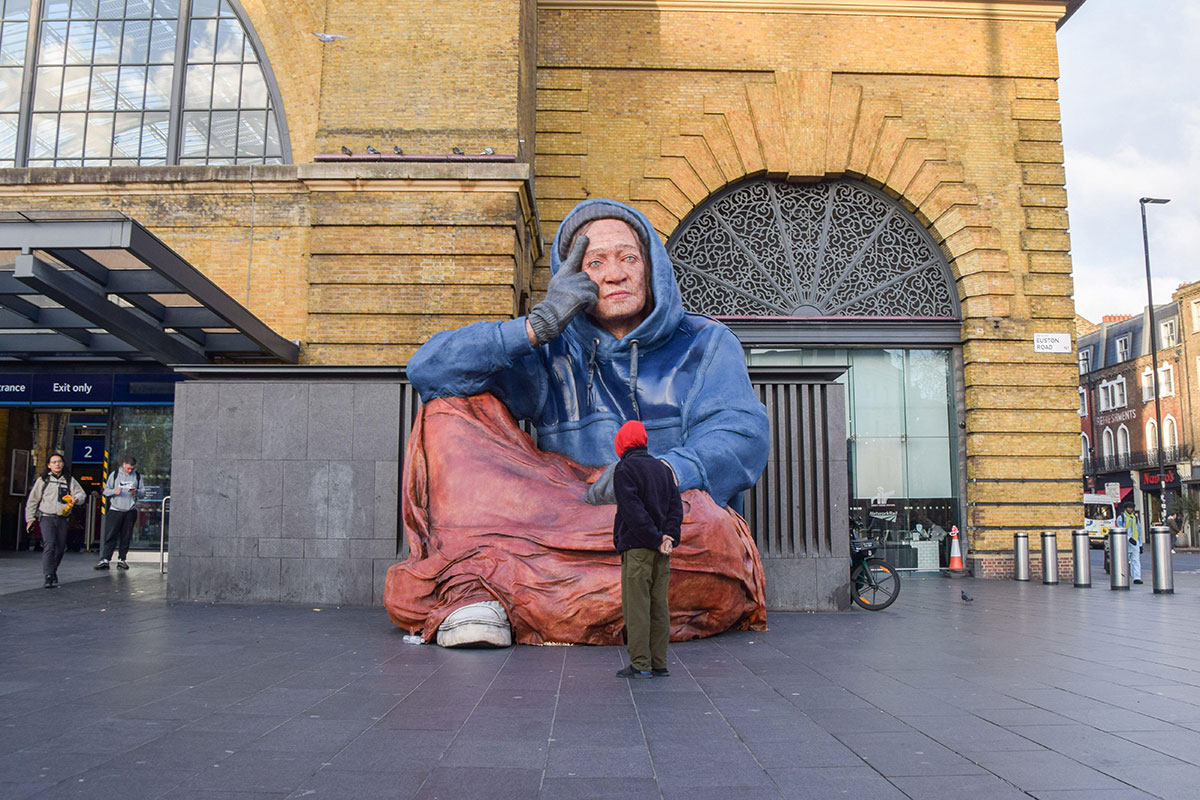You are viewing 1 of your 1 free articles
What is the future of Housing First?
Housing First has been piloted in the UK, and adopted by some local authority commissioners. But what is the future role for this policy, and is it delivering the big results seen internationally? Jess McCabe reports

Housing First doesn’t need much introduction. Its results in reducing homelessness in the US and elsewhere mean you probably don’t need to be told that it is an approach whereby people experiencing homelessness are given secure housing, then intensive, tailored support.
A major study in Canada found that 62% of Housing First participants were housed for the whole time of the research, compared with 31% of those who were required to participate in treatment prior to the receipt of housing. Finland is widely celebrated as being on the way to ending homelessness thanks to this approach.
This has led to major pilots of Housing First in England and Pathfinders in Scotland, and many individual local authorities have commissioned projects based on the seven principles of Housing First (see box, right). In September, the UK government announced that it was providing nearly £14m to extend the three pilots in the West Midlands, Greater Manchester and Liverpool by another two years.
But how has Housing First been working in the UK? Are we on course to repeat the international success of Housing First seen in the US, Canada, Finland and elsewhere? And will Housing First move on from a series of pilots and pathfinders to a general approach used across the country?
Our first port of call to answer these questions is Manchester – one of the pilot areas, which launched in 2019 with the aim of rehousing more than 300 people who were homeless or at risk of homelessness across the 10 boroughs. This pilot, like all Housing First projects, is aimed at providing housing and support to people who have usually got multiple, complex support needs, have been homeless for long stretches of time, and may have significant trauma.
“What Housing First proves is the more you set people up to succeed, they will”
Andy Burnham, mayor of Greater Manchester, is enthusiastic about Housing First. “I often refer to it as quite emblematic of the change we need in public services more broadly, because it’s based on a principle of support, without questions,” he tells Inside Housing. “Housing First starts with a kind of simple belief that all people are basically good. And if you give them stability, they will recover. And you know what? They do.
“I think sometimes public services are based on the opposite, you know, that we kind of have to limit it, ration it, rules. You can’t do this. We make it hard for people to get support. Whereas what Housing First proves is the more you set people up to succeed, they will.”
Of the 330 people housed by Greater Manchester’s Housing First programme in its first three years, there was an 82% tenancy retention rate. “We call it a programme; we don’t need to pilot this intervention. There’s evidence that it works at scale internationally,” says Emily Cole, programme lead for Housing First in Greater Manchester.
Heriot-Watt University recently published research on the five Pathfinder Housing First programmes in Scotland, in Aberdeen City and Aberdeenshire, Dundee, Edinburgh, Glasgow and Stirling. This analysis looked at what happened to 579 people housed by the end of September 2021, and found that 88% were able to sustain their tenancies for 12 months, and 80% by the end of two years. No one had been evicted. The results, the researchers concluded, are broadly in line with international Housing First projects.
About 6% of the people on the programme had died, and some had moved into supported or other homelessness accommodation. Another 2% of tenancies ended because of a long-term prison sentence, and 2% were abandoned tenancies. “Many reported that [Housing First] had surpassed their expectations, in large part because of its success in providing a solution for individuals who had been poorly served by mainstream services and previously cycled in and out of homelessness and institutional care settings for prolonged periods of time,” the researchers concluded.
Beyond the headlines
The results were also positive for the people on the programme. “Service user interviewees all reported that the Pathfinder had made a very positive difference to their lives, with some going as far as to suggest that its effects had been transformational,” Heriot-Watt’s report says.
Wheatley has created more than 300 Housing First tenancies in Scotland. Laura Henderson, managing director of Wheatley Homes East, says that the programme has “continued to evolve in terms of what does good support look like? And how do we work together to be able to achieve that?”
The seven principles of Housing First
Housing First is based on seven principles. According to Homeless Link, these are:
- People have a right to a home. “Housing First prioritises access to housing as quickly as possible,” Homeless Link says.
- Flexible support is provided as long as is needed. “Providers commit to long-term offers of support which
do not have a fixed end date.” - Housing and support are separated. “An individual’s housing is not conditional on them engaging with support.”
- Individuals have choice and control. This means they have the choice, where possible, about where they live.
- An active engagement approach is used. Caseloads are small – the Scottish Pathfinders, for example, aimed for support workers to have seven cases per person. Staff are meant to make the service fit the person.
- The service is based on people’s strengths, goals and aspirations. “Services are underpinned by a philosophy that there is always a possibility for positive change and improved health and well-being, relationships and community and/or economic integration.”
- A harm reduction approach is used. This could include supporting people who use substances to reduce immediate harms to their health.
But looking beyond the headline figures reveals a slightly more complicated story about what is going on with Housing First. The researchers also found that the programme was held back by “stigmatised attitudes” held by some staff members, and that limited access to health and social care services was a problem.
Ms Cole says Greater Manchester has come up against problems accessing health, care and support, too. “We really did want to try and integrate into the system or change the system, but actually in all three pilot regions, what happens is they’ve ended up being outside of the system,” she says. “So we have different ways of working for people in our programme, because they’re on our programme, rather than actually changing the system, [which would have been a] benefit for more people.”
For homelessness researchers like Dr Lígia Teixeira, chief executive of the Centre for Homelessness Impact, there are still unresolved questions about Housing First in the UK. There is yet to be a randomised controlled trial on Housing First in the UK, with some unhoused people getting Housing First and others getting the interventions that were in place before.
“What we would say is unethical is not testing things properly. Let’s put it that way, precisely because we’re not learning as fast as we could”
“The evaluations we have so far in this country, they don’t have a control group,” says Dr Teixeira. “We can’t test the effectiveness of this against what was there before.
“In North America, what they had before Housing First [for homeless people] was so crappy, it’s not a surprise that the outcomes in Housing First are so much better. But my hypothesis here is that even though this is definitely the right thing to do, philosophically, in human terms, my suspicion is that when we do get round to having studies that include control groups, because our usual offer is much better in quality than what the equivalent [provision would have been in] North America, the difference wouldn’t be as dramatic in terms of outcomes.”
Does this matter, if it is still the right thing to do? “What we would say is unethical is not testing things properly. Let’s put it that way, precisely because we’re not learning as fast as we could,” Dr Teixeira says.
This may be increasingly important. So far, Housing First exists as a handful of government-funded pilots and services commissioned by local authorities. But how and when do we move from the pilot phase? And what does that look like? The Housing First programmes across the UK are all subtly different. All of those Inside Housing spoke to include the basics of a secure tenancy plus extensive support.
In numbers
£14m
Funding to extend Housing First pilots in West Midlands, Greater Manchester and Liverpool
82%
Tenancy retention rate in the first three years of Greater Manchester’s Housing First programme
300
Number of Housing First tenancies Wheatley has created in Scotland
Supply challenge
In Kent, Hannah Skerritt delivers two locally commissioned Housing First programmes for Medway and Swale, each housing and supporting 10 people at a time. She works for Riverside Housing Association, which delivers the support side for the council – but not the housing (this is intentional so that Ms Skerritt’s team doesn’t have an enforcement role in any way relating to the tenancies).
Even on this small scale, there are differences – to be accepted onto Housing First in Medway, one of the partners involved does a referral, then the person is considered by a panel including Riverside. But in nearby Swale, the applications are directly from the rough sleeping initiative team.
John Glenton, executive director of care and support at Riverside, says that Housing First needs to be fitted in with other services, so it is one of many pathways. He talks about the pandemic, when the government launched Everyone In and people sleeping rough were brought into hotel accommodation. “The results we saw working in hotels were amazing. Now, some people benefited from moving on to either Housing First or a Housing First-style service. But other people, with a little bit of help, and access to accommodation, could be totally independent within six weeks. And some people might need six months, some people might need a lifetime of low-level support.”
“The biggest challenge has been, and still is, housing supply. You can’t deliver Housing First without housing”
Then there is the cost of living crisis. Ms Cole in Manchester says: “We know from speaking to other Housing First providers, they’ve already started to see people abandon properties, because they’d rather live on the street than have to deal with the pressure of maintaining bills and managing everything like that. You have to look at, is it even ethical for us to put people into accommodation that they can’t afford?”
The economic crisis looms large over funding for Housing First as well, with the government yet to announce what happens after the Housing First pilots end.
“We were allowed to take on some new referrals recently, about 48 people, to get back up to capacity,” says Ms Cole, following the UK government’s extension of the English pilots by two more years. “But now we cannot take on any new people, even if people leave the programme for whatever reason. And we need to work with the current people that we have. Because of that funding uncertainty.”
Inside Housing’s readers have a role to play in all this – in supplying homes for Housing First. As the UK government’s interim report on its three Housing First pilots notes: “The acquisition of sufficient quantity of suitable properties is widely regarded as the greatest challenge and ongoing risk to scaling up Housing First.”
Or, as Ms Cole puts it: “The biggest challenge has been, and still is, housing supply. You can’t deliver Housing First without housing.”
Sign up for our homelessness bulletin
Already have an account? Click here to manage your newsletters











